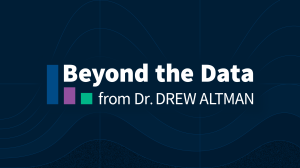The Shifting Sands for State Medicaid Programs Lurking in Our Data
 By far the biggest thing about the great Medicaid unwinding of 2023 is the number of low-income people who have been disenrolled, and we have been tracking that relentlessly at KFF. More than 16 million people have been disenrolled so far, as continuous Medicaid coverage provided during the pandemic ended, based on the most current data from all 50 states and the District of Columbia. About 70% of the disenrollments were for procedural reasons. Many people dropped will get coverage elsewhere, through an employer or the Affordable Care Act marketplace, and some who are still eligible will make their way back to Medicaid. The big question is how many will end up uninsured. The picture will vary across states, as it always does when it comes to covering the low-income population.
By far the biggest thing about the great Medicaid unwinding of 2023 is the number of low-income people who have been disenrolled, and we have been tracking that relentlessly at KFF. More than 16 million people have been disenrolled so far, as continuous Medicaid coverage provided during the pandemic ended, based on the most current data from all 50 states and the District of Columbia. About 70% of the disenrollments were for procedural reasons. Many people dropped will get coverage elsewhere, through an employer or the Affordable Care Act marketplace, and some who are still eligible will make their way back to Medicaid. The big question is how many will end up uninsured. The picture will vary across states, as it always does when it comes to covering the low-income population.
But there is another story in the data that goes with the unwinding that has mostly escaped notice. We are seeing a decline in federal Medicaid funding as fiscal relief to states in the form of higher matching funds is withdrawn, and an increase in state Medicaid spending, despite lower enrollment. And it’s happening when revenues in most states are weakening. That can be expected to put pressure on state budgets, rekindle on again off again conflict in states about the share of the budget consumed by Medicaid, and make it tougher for states to continue current efforts to strengthen their Medicaid programs.
A few numbers:
- The Congressional Budget Office projects that states will receive $58 billion less in federal Medicaid outlays in FY 2024 than they did in 2023. As a consequence, states report that their Medicaid spending will increase by 17.2% in FY 2024.
- State revenue collections have started to slow down or decline, and some states may have to face budget gaps in the coming years. States have recently experienced an overall 2% decline in inflation adjusted revenues.
- Most of the state numbers are estimates and projections. They are often the product both of best estimates and political calculus, but over the years, they’ve generally been in the ballpark.
- States are spending to address rising costs in Medicaid and health care, but also long overdue needs, such as increasing some providers payment rates or putting more resources into home and community-based services or mental health and behavioral health services. States like California and North Carolina are making big plays to address the social determinants of health outcomes for targeted populations. These are some of, if not the most innovative programs in health care.
Medicaid will face blowback in state budget wars in many states as it eats up a larger share of the new funds available in state budgets that legislatures, cabinet agencies, and governors will want to direct to other priorities. When I was Human Services Commissioner in New Jersey, I had eight divisions and a third of the state budget and workforce in NJ HHS (the department has long since been reorganized and reduced in size). One division was Medicaid. The competition for new funds was fierce even within my own department when times were good. In state budget politics, only so much of the annual increase in a state budget will go to one department, no matter the need.
As always there will be variation among states. Where governors have made Medicaid initiatives a personal priority, they may sustain them despite revenue and budget challenges, even cutting elsewhere in Medicaid and social services to continue favored projects.
In our large survey of consumers, Medicaid generally competed well with Medicare, Marketplace and employer coverage, with each type of coverage presenting consumers with the kinds of barriers to care and frustrations common to health insurance today. But Medicaid programs face their own challenges, including access to many specialists.
The question for the next several years is whether states will be able to continue to make targeted new commitments to strengthen Medicaid and mount innovative new programs in an environment of declining federal matching funds, weakening state revenues and competing state priorities. Medicaid is a counter-cyclical program and these are far from the worst circumstance states have faced. The election obviously can have significant additional consequences for Medicaid, especially if Republicans control the White House and Congress, and return to proposals to block grant Medicaid and make significant cuts in federal funding. But that’s only a possibility, while these changes are already in the works, bringing with them shifting sands for Medicaid.
